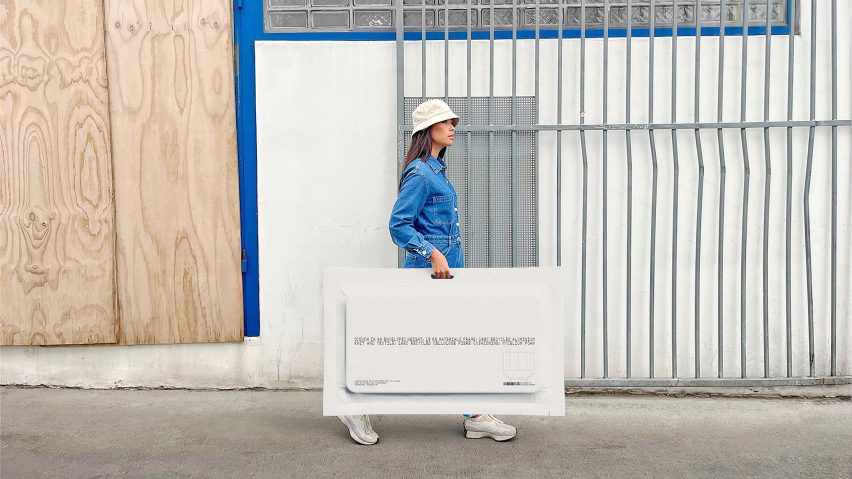
Space10 counts AI as collaborator on Couch in an Envelope prototype
Artificial Intelligence acted as a "creative collaborator" in a project by IKEA's research lab Space10 and design studio Panter & Tourron to reimagine the couch as a lightweight and foldable seating design.
The resulting prototype, called Couch in an Envelope, weighs less than 10 kilograms and folds up into a vacuum-sealed pouch similar to an oversized shopping bag that can be carried home by a single person using one hand.
The project was born out of the aim to subvert expectations around sofa design, which the studios saw as limiting the product category to large, cumbersome pieces.
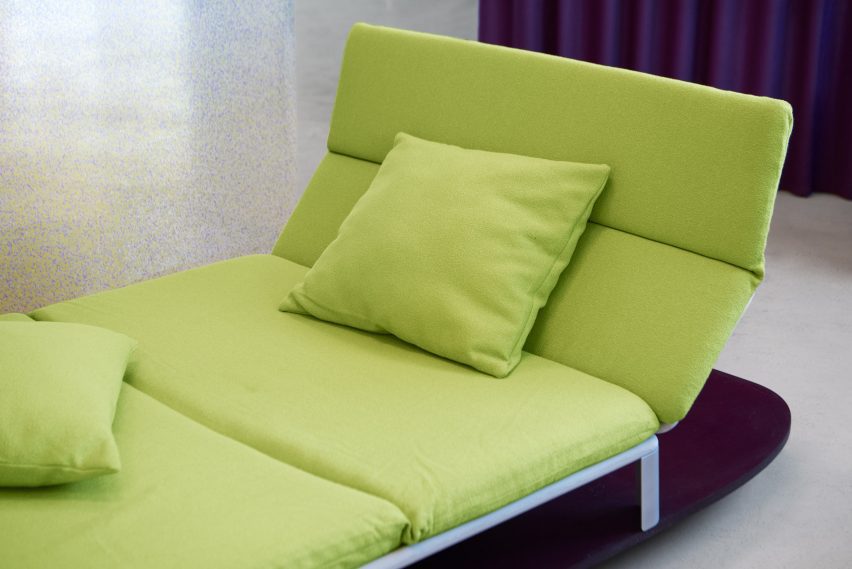
By conceiving of couches primarily for comfort, they felt designers were also making the products a burden.
Space10 and Panter & Tourron wanted to create something more sustainable, moveable, adaptable and sociable – and they wanted to challenge artificial intelligence (AI) to do the same.
"This project began as a way to challenge problematic design archetypes," said Space10 producer Georgina McDonald.
"However beloved it is, the couch is often a strain on people owing to its weight, the planet due to its design intricacies and a burden on the friends who generously help us to move."
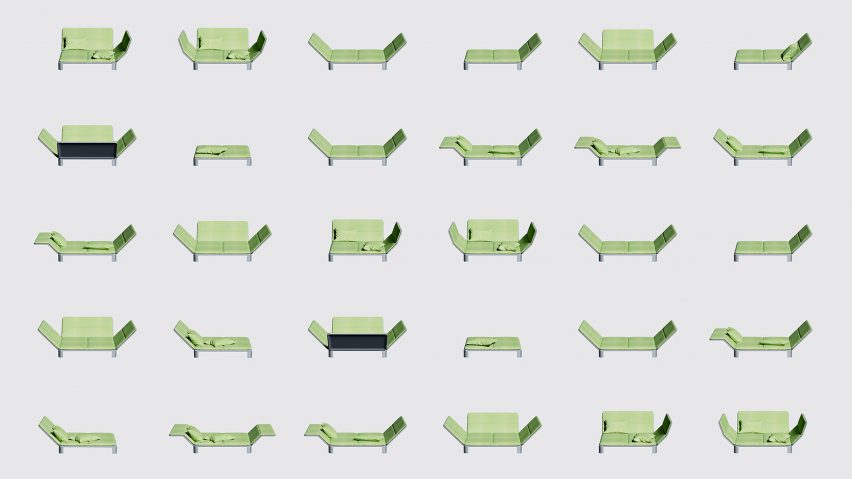
The studios worked with the AI programmes Midjourney and Runway, which generate images from natural language descriptions, as well as the ChatGPT chatbot in the development of the couch before ultimately turning it into a physical prototype.
McDonald initially experimented with using ChatGPT to answer the prompt: "Could a couch fit in an envelope".
After finding that the chatbot lacked the imagination to think beyond rigid definitions of "couch" and "envelope", she collaborated with Panter & Tourron to see whether AI could be pushed to think outside of the box.
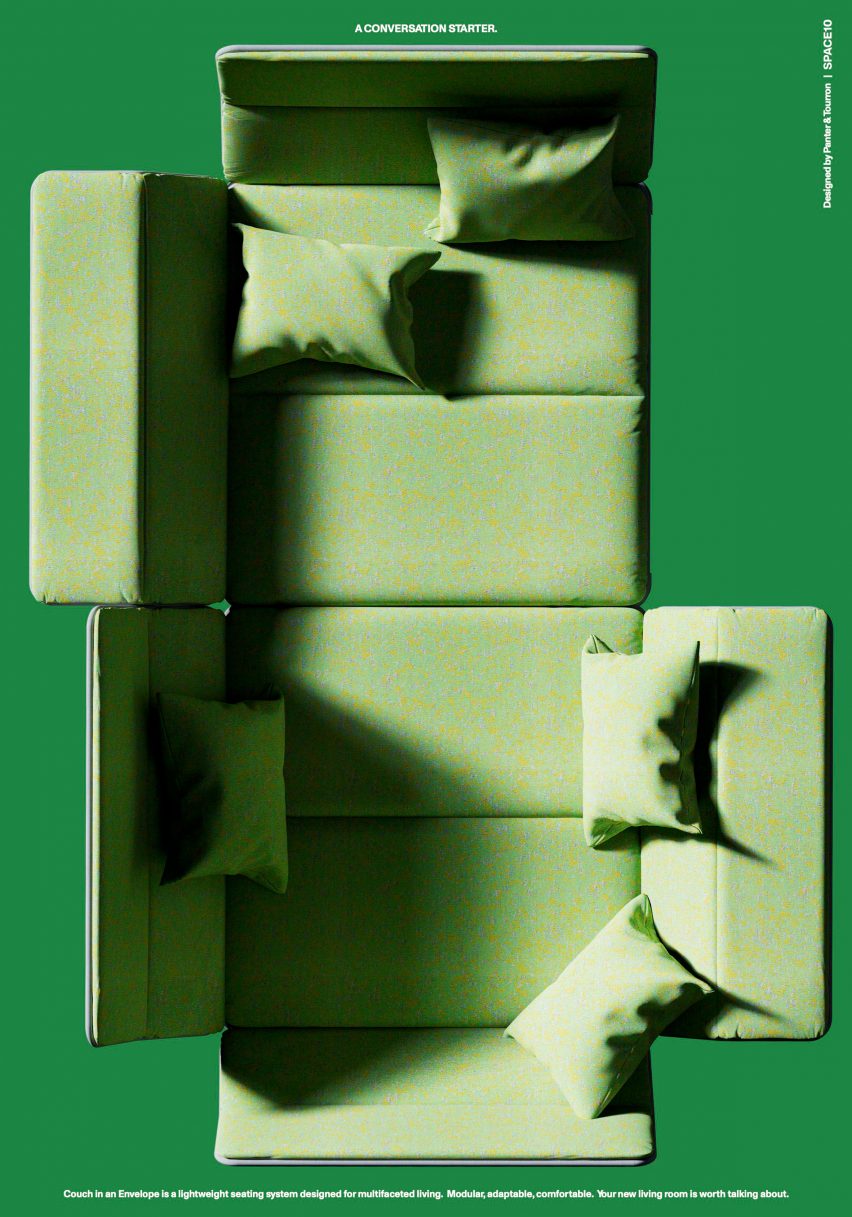
Panter & Tourron approached the project through two intersecting routes – the first using their own sketches and the second using generative AI, primarily Runway, to come up with images.
At first, they found the AI to be annoyingly restrictive – any use of the word "couch" would always return the same archetypical shapes they were trying to avoid.
But by switching to alternative prompts such as "platform", "lightweight", "sustainable", "easy to move" and "conversation pit", the results began to change.
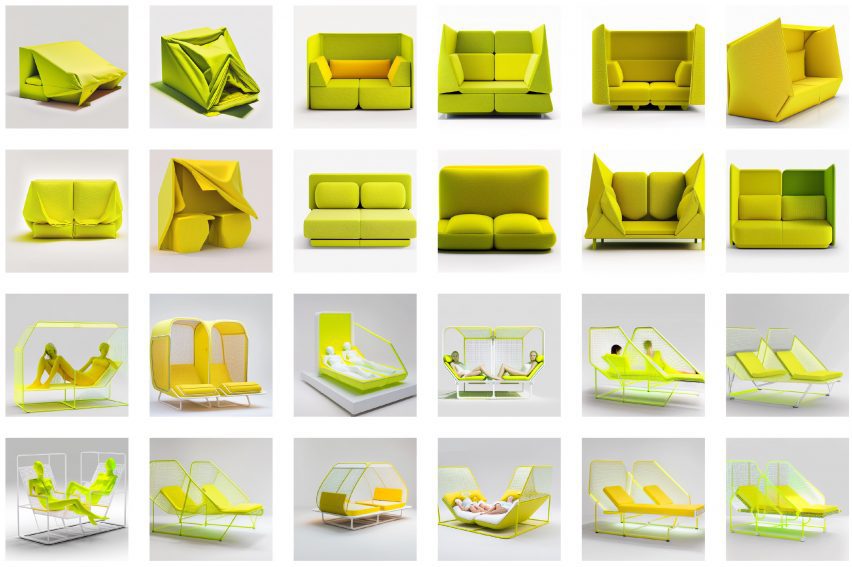
Eventually, the designers ended up using a new feature launched during the project that allowed them to train their own custom model using their renders as the dataset.
The AI would then generate variations on these images, the designers would iterate on top of that and a collaborative cycle was created.
The final design consists of a green seating system on a flat platform base with slim upholstered foam seating and modular and foldable "wings" that can serve as back- and armrests or a book holder.
McDonald says AI acted as a "creative collaborator" in the Couch in an Envelope project and a "visual checklist" that allowed the studios to make sure they'd considered a wide range of sitting positions, uses, forms and more.
However, the technology proved less useful when it came to other factors such as material composition – although that functionality may arrive in the future.
For example, its responses to the prompt "sustainable" only look like sustainable products but may not actually use more sustainable materials.
Here, the project's human designers stepped in and chose an aluminium base, mycelium foam cushions and a cellulose-based 3D knit for the upholstery so the product would be completely recyclable.
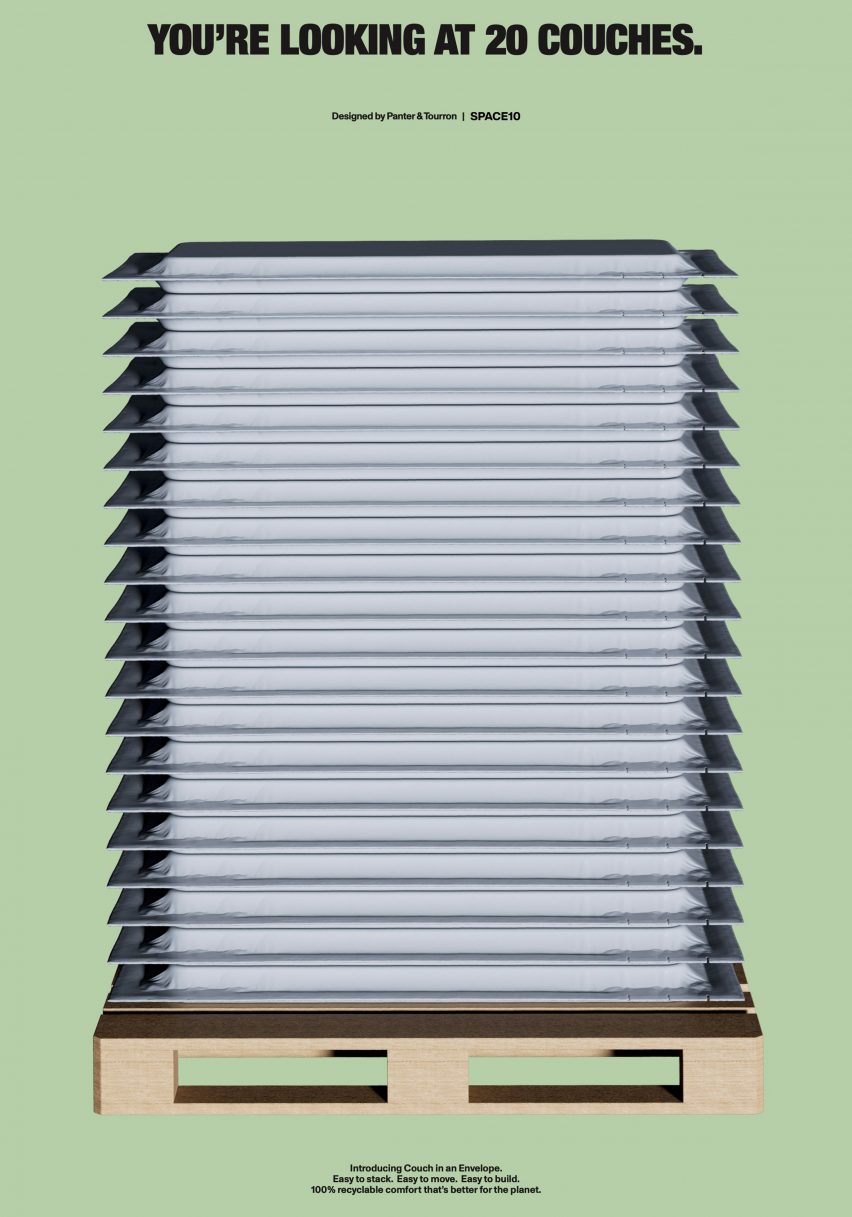
Following her experience on Couch in an Envelope, McDonald says she is not interested in letting AI design without human intervention and thinks the value of human designers is in their innate subjectivity.
"Why would a machine have any more experience?" she told Dezeen. "A machine hasn't sat on a couch before. It hasn't cried on a couch before. It doesn't know what it feels like, so it could only take us so far in this particular thing."
"The machine is an accumulation of everyone's feelings. And I don't think that the average of an accumulation should be the thing that dictates what is right or true."
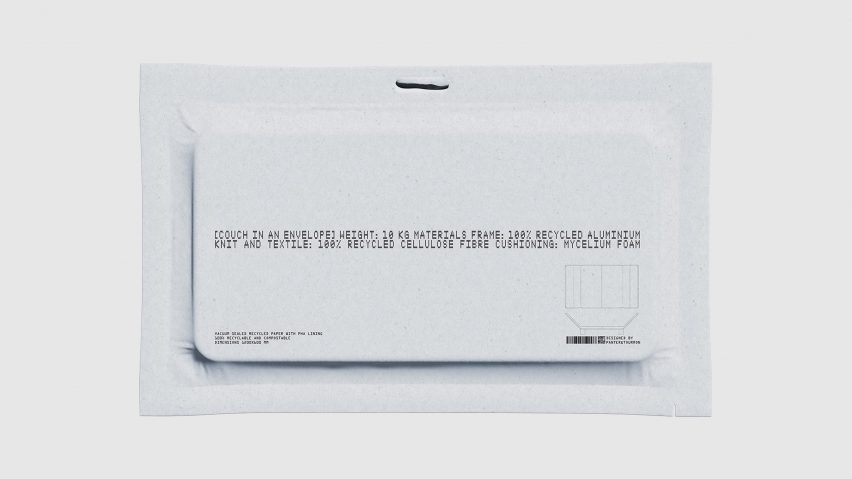
The Couch in an Envelope prototype was on show at Space10's exhibition Design in the Age of AI at the 3 Days of Design festival in Copenhagen. It is a speculative project and there are currently no plans to put the sofa into production.
Space10 is a Copenhagen-based research and design lab that works with Swedish furnituremaker IKEA.
While the studio is just starting to work with AI, its previous concept designs include ideas for how AI could be incorporated into furniture and design including in Updateables – a project that imagines an app for upcycling tired furniture.
3 Days of Design took place in venues around Copenhagen from 7 to 9 June 2023. See Dezeen Events Guide for information, plus a list of other architecture and design events taking place around the world.
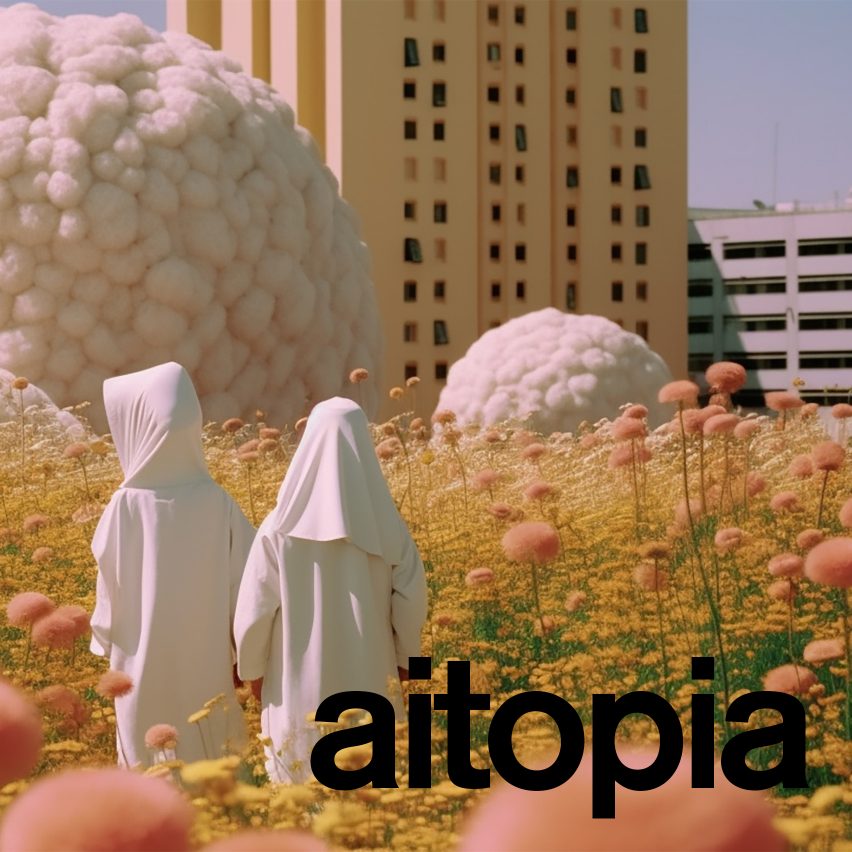
AItopia
This article is part of Dezeen's AItopia series, which explores the impact of artificial intelligence (AI) on design, architecture and humanity, both now and in the future.